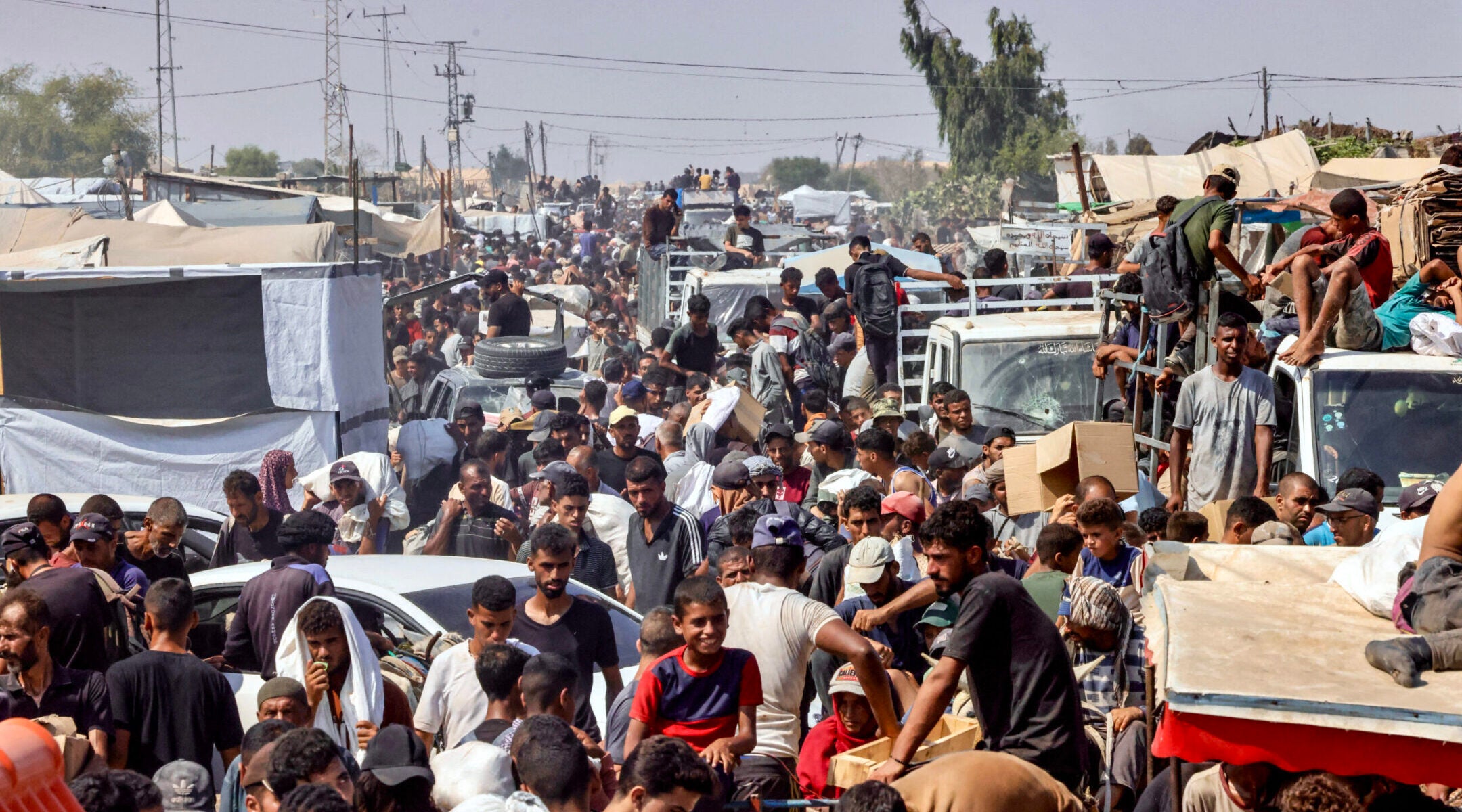Two months ago, on May 27, the Gaza Humanitarian Foundation began distributing food in the Gaza Strip. From the outset, the group was mired in controversy. Israel initially claimed it had no connection to the organization, calling it an independent American foundation. Within days though, the chairman resigned, and a major U.S. consulting group cancelled its contract with the GHF amid questions over its funding and management.
Despite the turbulence, that day was celebrated by some in Israel as a breakthrough. Finance Minister Bezalel Smotrich hailed the GHF’s arrival as a “turning point in the war.” Finally, he declared, there was an entity that could deliver to the Palestinian people who needed it without connection to the United Nations and without simply funneling supplies to Hamas. The GHF, Smotrich insisted, would bypass the terror group and reach ordinary Gazans in need.
“God willing, [this will] lead to victory and the destruction of Hamas,” Smotrich said at the time. “Better late than never.”
It’s worth recalling those words after Sunday, when Israel began parachuting aid into Gaza and allowing other nations to do the same, while implementing daily pauses in fighting as claims of mass starvation sparked unprecedented global outrage.
While the United Nations’ accusations should be viewed skeptically given its institutional bias against Israel, Netanyahu could not ignore a joint statement by 28 countries — including the United Kingdom, Canada, France, Italy and Japan — demanding an immediate end to the war and condemning what they called “the drip feeding of aid and the inhumane killing of civilians, including children, seeking to meet their most basic needs of water and food.”
Under pressure and recognizing that ignoring the pleas would come at a price, Netanyahu ordered a dramatic policy shift: Israel would significantly increase aid deliveries, parachute food into Gaza, and implement daily 10-hour pauses in populated areas, establishing new humanitarian corridors.
The move raises stark questions about Israel’s conduct and assumptions throughout the war. Did the government genuinely believe, as it claimed in March when the last ceasefire collapsed, that it could halt nearly all aid to Gaza without paying a crushing diplomatic price? When the GHF began operations in May, did Israel truly believe that this private initiative would change the war’s trajectory and bring Hamas to its knees?
Reality tells a different story. Hamas has not buckled under pressure since the GHF began distributing aid. If anything, it has hardened its demands. Last week, both the United States and Israel pulled out of ceasefire talks in Doha, with President Donald Trump bluntly declaring that Hamas does not want a deal. Can Israel alone be blamed for the deadlock? No. When Hamas sees France formally recognizing a Palestinian state and dozens of countries issuing unprecedented condemnations of Israel, it has little incentive to compromise or free the hostages.
And while Israel is right to push back against the exaggerated language of “genocide” and “mass starvation,” it cannot deny that Gaza faces a genuine humanitarian crisis. Pretending otherwise — as some in Israel’s leadership have done — doesn’t make the problem disappear. Israel may insist that there is no famine, and technically be correct, but the optics are undeniable: After 22 months of war, Israel is airdropping aid and halting military operations, an act that for much of the world reads as an admission that the crisis is very real.
The deeper problem, however, is not the aid itself. It is the pattern the aid represents: reactive decisions by Jerusalem, and not strategic thinking. For over a year, this war has been plagued by the same flaw: no clear plan, no defined objectives and no coherent endgame. Only tactical moves, almost always made under either diplomatic or political pressure.
The GHF was supposed to isolate Hamas and the renewed military operation was supposed to force Hamas into a hostage deal. Neither outcome has materialized. Now, defense officials argue that by addressing the starvation narrative, Israel will corner Hamas and pressure it to negotiate. Will that theory hold? Maybe. But experience suggests otherwise.
What is undeniable is this: Nearly two years after Oct. 7, Israel is not too far from where it started — improvising, dropping aid from the sky, pausing operations, and grasping for a path forward. The government still cannot articulate how this war ends. Until it does, every shift — from the GHF’s launch to the latest aid parachutes — will be just another tactical adjustment in a war drifting without a strategy.
Keep Jewish Stories in Focus.
(JEWISH REVIEW) has documented Jewish history in real-time for over a century. Keep our journalism strong by joining us in supporting independent, award-winning reporting.
is co-founder of the MEAD policy forum, co-author of “While Israel Slept,” about the Oct. 7 attack, a senior fellow at the Jewish People Policy Institute, and a former editor-in-chief of The Jerusalem Post.
The views and opinions expressed in this article are those of the author and do not necessarily reflect the views of (JEWISH REVIEW) or its parent company, 70 Faces Media.




